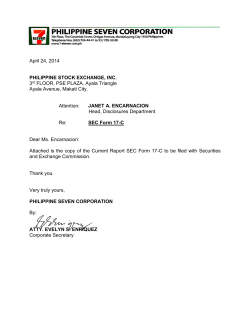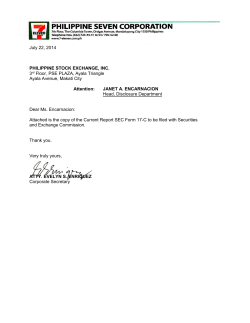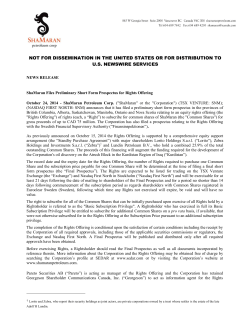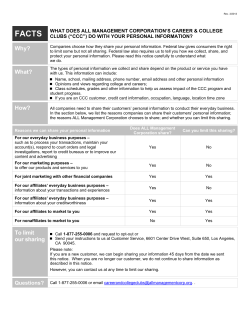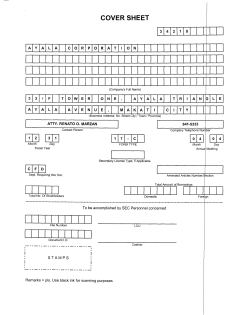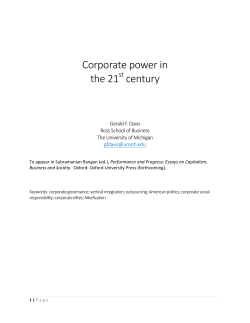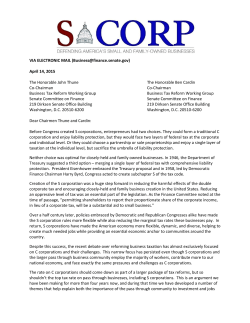
An Overview of Corporations
An Overview of Corporations Is it time to rethink public corporations? (MPR Nov. 14, 2012) MinnEcon Category Archive: Minnnesota Fortune 500 companies The cozy deals between medical companies and doctors explored (MPR Dec 27 2011) Fortune 500 (CNNMoney) The Place of Corporations in Public Policy Lobbying Lobbying A Paradigm for Landscape Legislation Regulation Judicial Opinions Activities Goods Services Structures Organization of Space Landscape Law Public Policy Organization of Behavior Government Role Evaluation Indices Evaluation Transportation – automobile, railroad, airline, and shipping companies Raw material production – mining, Manufacturing/Wholesale/Retail – food, clothes, consumer goods, Services – banking, insurance, Production Spectrum & corporations Information –statistics, public records Risk assumption Deconstruct public policy into statutory, administrative, and case law Lobbying Congress Legislative Mandate Agency Legislation Lobbying Regulation Courts LAW – PUBLIC POLICY Study: A small dose of chocolate could cut heart attack or stroke risk by almost 40 percent (The Gaea Times, March 30, 2010) Bitter claim: Price of your chocolate fix is fixed (Star Tribune, March 31, 2010) • Eden Prairie-based Supervalu Inc. filed suit Monday in a Pennsylvania federal court, claiming that the Hershey Co., Mars Inc., Nestle USA and Cadbury PLC fixed prices on chocolate candy from 2002 through at least 2008 • Supervalu's suit echoes legal claims made in recent years against chocolate candy makers by some of the nation's largest grocery and snacks retailers -- Kroger, Safeway, Walgreens, and CVS Pharmacy • Supervalu in its suit claims the four defendants control 76 percent of the U.S. chocolate candy market, with Hershey leading the pack with a 43 percent share and Mars second with 24 percent • Instant Appeal Certified in Chocolate Price-Fixing Case (Law.com) • 87 consolidated antitrust suits • Update (Kotchen & Low October 9, 2011) Justices to consider Wal-Mart suit on female workers (Washington Post, March 28, 2011) Justices question whether women suing the retailer have made a compelling case that a jury should hear the issue (Washington Post, March 29, 2011) Wal-Mart Stores, Inc, v Dukes et al 564 U.S. ____ (2011) Book. Civil Action (1996) Film. Civil Action (1998) • Anne Anderson, et al., v. Cryovac, Inc., et al. (Wikipedia) Film. Erin Brockovich (2000) Pacific Gas and Electric Company Film. North Country (2005) • Jensen v Eveleth Taconite Company (Wikipedia) • Jensen v Eveleth Taconite Company 130 F.3d 1287 Project 4 Find a U.S. public corporation involved in some way with your topic A. Describe its current operation • Pay attention to the location of its various parts and its product line • Pay attention, also, to the political and legal environment in which it carries out its business B. Describe the corporation's history for the past half century, especially changes in the location of its plants, its product line, and its operational environment Commercial Law (Wikipedia) Learn about Business Law & Regulations (Small Business Administration) Corporations: An Overview (Legal Information Institute) “The law treats a corporation as a legal "person" that has standing to sue and be sued, distinct from its stockholders. The legal independence of a corporation prevents shareholders from being personally liable for corporate debts. It also allows stockholders to sue the corporation through a derivative suit and makes ownership in the company (shares) easily transferable. The legal "person" status of corporations gives the business perpetual life; deaths of officials or stockholders do not alter the corporation's structure.” Corporate Law Center (Fordham University) Corporate Law (HG.org) Importance of Corporations (ActionPA.org) CorpWatch.org Corporations (Anup Shar) Classification of Corporations Public corporations – owned by the public – offering bonds and shares • For profit • Non profit – organized under U.S. Internal Revenue Code Section 501(c) • Standard Industrial Classification Private corporations – owned by individuals, often family, America’s Largest, private equity firms (Bain Capital) • includes Government-sponsored enterprises – Fannie Mae, Freddie Mac Government chartered and owned corporations – FDIC, Ginnae Mae, National Railroad Passenger Corporation, Pension Benefit Guaranty Corporation, St Lawrence Seaway Development Corporation, Tennessee Valley Authority Municipal corporations Public Companies (Wikipedia) Public corporations – raises money from the public – you and I owned by the public, who purchase stock in the company • traded on the Stock Exchange value of which rises and falls • stock market borrows money from the public by issuing bonds • to be paid back at a certain rate of interest over a certain period of time • bond market Must file forms and reports with the Securities and Exchange Commission (SEC) May incorporate in any state Bonds and stocks are both securities Public Corporations Joint stock company – a business in which capital is collected from the individual contributions of shareholders, each of which is given certificates of ownership (stocks) in return The shareholders are free to transfer their ownership interest at any time by selling their stockholding to others The company is managed on behalf of the shareholders by an elected Board of Directors – unusual for shareholder to be on board Hold annual general meeting, produce an annual report, are audited yearly Stock/Shareholders have a number of privileges • share in the company's net profit – also called a dividend • liable for company debts that exceed the company's ability to pay but usually limited to the face value of their shareholding Holding company A company that owns part, all, or a majority of other companies' outstanding stock Usually refers to a company which does not produce goods or services itself, rather its sole purpose is owning shares of other companies Holding companies reduces the risk for the owners and allow owners of the stock to control a number of different companies Stock and bonds of public holding companies can be owned by individuals In the United States, Berkshire Hathaway is one of the largest publicly traded holding companies, owns insurance companies, manufacturing businesses, retailers, and other companies Bank holding companies United Continental Holdings Inc. and AMR Corporation publicly traded holding companies whose primary purposes are to wholly own United and Continental Airlines and American Airlines Agri-business Companies Archer Daniels Midland Nash Finch Land O'Lakes CHS General Mills - Pillsbury Safeway Hormel Foods Securities & Exchange Commission The mission of the U.S. Securities and Exchange Commission is to protect investors, maintain fair, orderly, and efficient markets, and facilitate capital formation Statutes and rules that govern the securities industry in the United States derive from a simple and straightforward concept All investors, whether large institutions or private individuals, should have access to certain basic facts about an investment prior to buying it, and so long as they hold it Statutes that govern the securities industry (SEC) 17 CFR Securities and Exchange Commission Securities Law, Rules, Regulation, & Information (SECLaw.com) U.S. Code (Legal Information Institute) • • • 15 USC Commerce & Trade 12 USC Banks & Banking 29 USC Internal Revenue Code CFR (Legal Information Institute) • • • • 12 CFR Banks & Banking 13 CFR Business Credit & Assistance 16 CFR Commercial Practices 17 CFR Commodities & Security Exchange Pensions (Wikipedia) Governed primarily by federal statutory law – the Employee Retirement Income Security Act (1974) Defined benefit plan the benefit that an employee receives is normally based on the length of a workers employment and the wages that were received • Each employee does not have a separate account in these programs, as the money to support the pensions is generally administered through a trust established by the employer • No recourse for individuals with defined benefit plan when their employers go out of business <1974 - Act passed in response to the mismanagement of funds in direct benefit plans • All employers who engage in interstate commerce and provide defined benefit plans to their employees must abide by ERISA guidelines Defined contribution plan the employer makes regular deposits into an account established for each employee • The employee receives the amount in the account at retirement Pensions Department of Labor responsible for the operation of the pension plans Internal Revenue Service responsible for funding the plans Pension Benefit Guaranty Corporation established to insure the pensions Federal corporation created by the Employee Retirement Income Security Act of 1974 It currently protects (insures) the pensions of more than 44 million American workers and retirees in more than 29,000 private singleemployer and multiemployer defined benefit pension plans Operations are financed by insurance premiums set by Congress and paid by sponsors of defined benefit plans, investment income, assets from pension plans trusteed by PBGC, and recoveries from the companies formerly responsible for the plans Companies insured by PBGC A Predictable Secure Pension for Life Labor Unions Objectives and activities but often include • • • • Provide benefits to members - professional training and legal advice and representation Collective bargaining – negotiate with employers over wages and working conditions. Industrial action – organize strikes or resistance to lockouts Political activity – promote legislation favorable to the interests of their members or workers as a whole; pursue campaigns, undertake lobbying, or financially support individual candidates or parties US Labor Law Executive Agencies US Department of Labor – working conditions US Department of Commerce – economic growth and jobs Federal Reserve Board – flow and value of money Federal Trade Commission – the nation's consumer protection agency Small Business Administration – provides support to small businesses and smallbusiness owners Consumer Products Safety Commission – product safety! Food and Drug Administration – food and drug safety Private Corporations Companies which are privately owned Capital raised via private funds Does not need to meet the Securities and Exchange Commission filing requirements of public companies US largest private companies (Forbes.com) Finding out about private companies (Chris Roush, UNC) Private Equity (Wikipedia) Lists Venture capital an investment to create a new company, or expand a smaller company that has undeveloped or developing revenues Buy-out acquisition of a significant portion or a majority control in a more mature company. The acquisition normally entails a change of ownership Special situation investments in a distressed company, or a company where value can be unlocked as a result of a one-time opportunity (Changing industry trends, government regulations etc.) The Carlyle Group The Blackstone Group (Wikipedia) Avista Capital Partners – Star Tribune – Bankruptcy Private equity, private lives (CNNMoney.com) Private equity’s impact limited (TwinCities.com) Corporate Tax Classification For profit business (Internal Revenue Service) • Corporations • International Businesses • Partnerships • Small Business and Self-employed Not for profit, charities – non-profit (Internal Revenue Service) • Tax Information for Charitable Organizations • Churches and Religious Organizations • Political organizations – see also Federal Election Commission • Private Foundations • Contributors to Non-profits Nonprofit Organizations Nonprofits:USA.gov The National Council of Nonprofits A guide to environmental nonprofits (MotherJones) Environmental Law Institute Environmental Defense Fund Natural Resources Defense Council Nature Conservancy List of nonprofits Cooperatives A legal entity owned and democratically controlled by its members, with no passive shareholder It combines the characteristic of many partnerships with the legality conferred on corporations Most cooperatives are organized as limited liability companies but other legal entities may also be used May or may not pay dividends to members by way of a rebate or bonus on their activity with the cooperative, or a dividend on their shareholding in the cooperative Electric Cooperatives (Wikipedia) Dairy Cooperatives (USDA) Land O’Lakes Government Corporations (GAO) A corporate entity established by Congress in which the government holds all equity Most listed in the Government Corporation Control Act (1945) The Act does not serve as a general incorporation law; each of these corporations have their own enabling legislation that stipulates its powers • Commodity Credit Corporation • Federal Deposit Insurance Corporation (FDIC) • Pension Benefit Guarantee Corporation • Tennessee Valley Authority (TVA) • The Saint Lawrence Seaway Development Corporation • US Postal Service • Federal Home Loan Mortgage Corporation (Freddie Mac) • Federal National Mortgage Association (Fannie Mae) Municipal corporation (Wikipedia) Minnesota Statutes Minneapolis Real Estate Investment Trusts (REIT) All about REITs Created by Congress in 1960 to give anyone and everyone the opportunity to invest in large-scale commercial properties A tax designation for a corporation investing in real estate – reduces or eliminates corporate income taxes – REITs are required to distribute 90% of their income, which may be taxable, to the investors who will be taxed REITs can be classified as equity, mortgage, or hybrid It may focus on a particular type of property, for example offices, apartments, shopping malls, strip centers or industrial properties Its revenue is the total rent coming in from the tenants Its profit is what remains after the property managers, janitors, lighting companies, mortgage companies, and local units of government have been paid Real Estate Investment Trust Like other corporations REITs can be publicly or privately held Public REITs may be listed on public stock exchanges like shares of common stock in other firms Public REITs in United States (Wikipedia) General Growth Properties – REIT - nation's second-largest shopping mall owner Established by brothers, Martin and Matthew Bucksbaum, in 1954 as General Management – opened first shopping center in Cedar Rapids, Iowa In 1960 1970 became General Growth Properties 1972 became a publicly traded company on the New York Stock Exchange. 1984 became a private company - sold 19 malls to Equitable Real Estate for $800 million but continued to manage them 1993 became public and in 1995 moved headquarters from Des Moines, Iowa to Chicago - subsequently expanding its portfolio by acquiring existing properties and constructing new malls On November 12, 2004, acquired The Rouse Company in the largest retail real estate merger in American history April 16, 2009, company, owning 158 properties, second-largest mall operator at the time filed for the largest real estate bankruptcy in US history Macy's has 106 of its 840 stores in General Growth's malls Bankruptcy The collapse of General Growth Properties, which operates more than 200 properties, is being called by analysts the largest ever failing by a mall operator The company currently has $27.3 billion in debt versus $29.6 billion in assets It has obtained $375 million in debtor-in-possession financing • Ridgedale Center in Minnetonka • Eden Prairie Center in Eden Prairie • Knollwood Mall in St. Louis Park • Apache Mall in Rochester • Crossroads Center in St. Cloud • River Hills Mall in Mankato Timber Investment Companies –Timber Investment Management Organizations An Introduction to Timberland Investing (Lyme Timber Co) A Survey of TIMOs (Forest Service) Institutional Timberland Investment (Yale University) Hancock Timber Resources Group RMK Timberland Group Timberland Investment Resources (private) The Lyme Timber Company (private) TIMOs and REITs (.docstoc) Timber (SmartMoney 2001) REITs Spread to Timber Industry (Wall Street Journal Nov 2005) Wells Timberland REIT Plum Creek Potlatch Pact Will Form First Publicly Traded Timberland REIT (Memphis Business Journal) Timberland: Wealth Emerges From the Forest (Wealth Management Exchange, May 2008) RMK and Nature Conservancy in the Adirondacks (Timberland Blog)
© Copyright 2025


